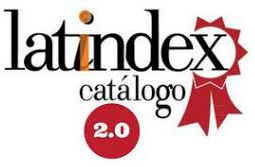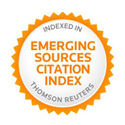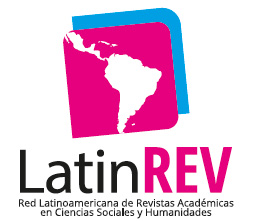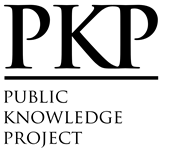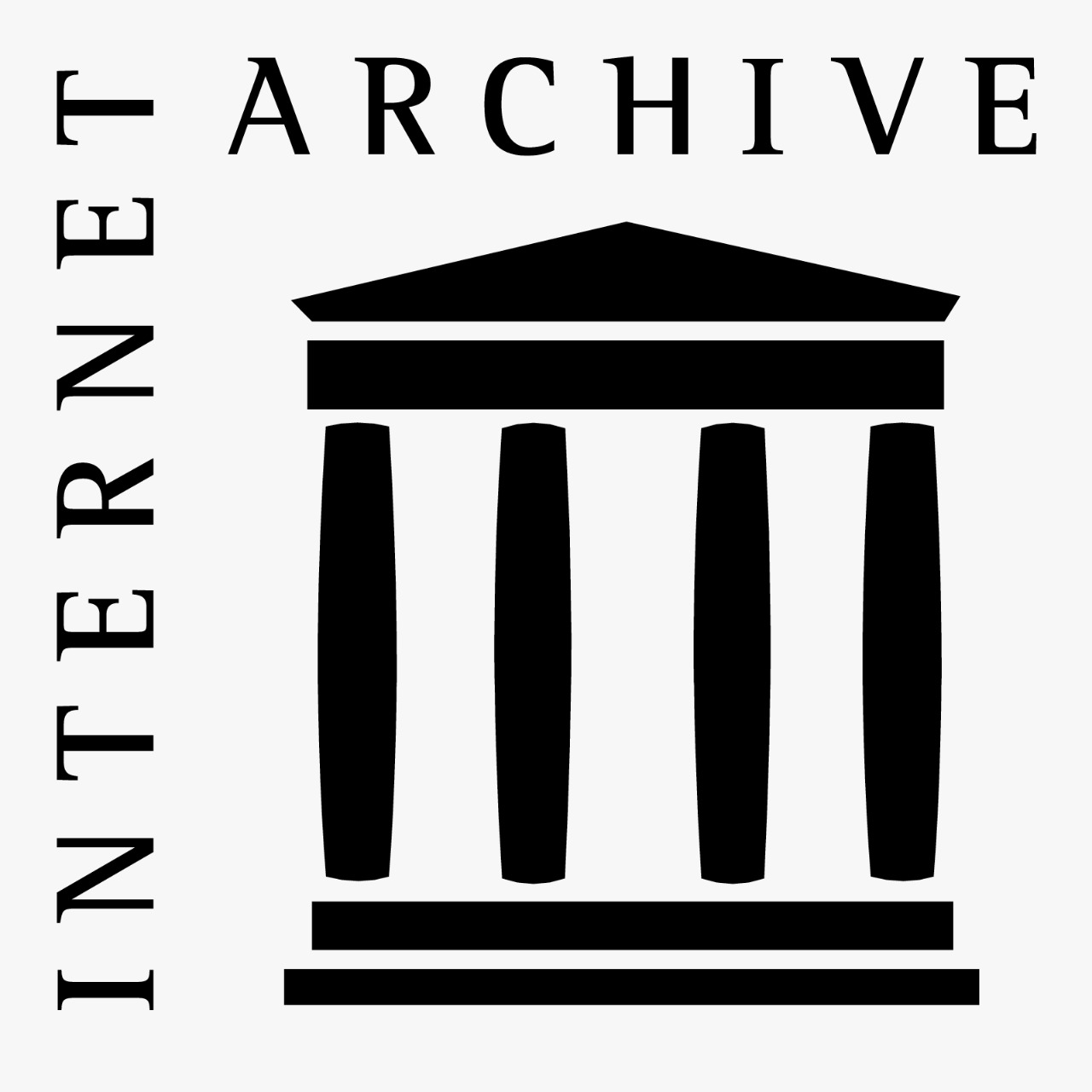La banda sonora de las marcas. Criterios de curación de las brand playlists de actividad como elemento estratégico de economía de la atención
Resumen
Este estudio se centra en el fenómeno de las brand playlist de actividad. Estas listas musicales están concebidas para ser escuchadas mientras se realizan actividades relacionadas con los productos o servicios que la marca representa. La estrategia permite a la marca captar la atención de la audiencia y compartir tiempo con ella. Planteado desde el prisma de la economía de la atención, el objetivo es determinar los criterios de curación para la selección y agrupación de las canciones, y comprobar si responden adecuadamente con el propósito de la marca o, por lo contrario, si son resultado de un trabajo arbitrario. Para ello, se han analizado 50 brand playlists de actividad pertenecientes a 7 marcas. El análisis cualitativo y cuantitativo se ha realizado a partir de variables extraídas de la literatura especializada, que determinan las características de la selección musical y agrupación: contexto, género musical, valencia emocional, duración, idioma, semántica y notoriedad, lo que constituye un modelo original e inédito de análisis para esta categoría de listas. A partir de la discusión de los resultados, es posible concluir que las brand playlists responden a un tipo de contenido no intrusivo que transmite los valores y la personalidad de marca a través de la música, adquiriendo la apariencia editorial de la plataforma. De este modo, cabalgan entre el branded content y la publicidad nativa. Asimismo, dentro de la economía de la atención, responderían a la categoría de un contenido que realza la experiencia de consumo, siendo resultado de una selección y agrupación musical que responde a criterios adecuados y no arbitrarios.
Descargas
Citas
Alaminos-Fernández, A. F. (2016). Estados de ánimo y las listas de reproducción en streaming en Spotify. Comunicación presentada en el IX Congreso Nacional de la Sociedad Española de Musicología, Universidad Autónoma de Madrid, 16-19 noviembre 2016. https://bit.ly/3HtlIrw.
Alaminos-Fernández, A. F. (2017). Obama's tracklist: proyectando una imagen pública a través de la música. Comunicación política y redes sociales. En Chaves-Montero, A., Aiello, W. F. G., Hernández-Santaolalla, V., Mármol, I., Mejía, S. G., Marín, A. A., ... & Eguizabal, F. A. L. Comunicación Política y Redes Sociales (pp. 137-155). Egregius.
Alcalde, J. (2007). Música y comunicación. Fragua.
Baeza-Yates, R., Fayyad, U.M. (2022). The Attention Economy and the Impact of Artificial Intelligence. In: Werthner, H., Prem, E., Lee, E.A., Ghezzi, C. (Eds.) Perspectives on Digital Humanism. Springer, Cham. https://doi.org/10.1007/978-3-030-86144-5_18.
Baraybar-Fernández, A., Baños-González, M., Barquero-Pérez, O., Goya-Esteban, R., y De la Morena-Gómez, A. (2017). Evaluación de las respuestas emocionales a la publicidad televisiva desde el Neuromarketing. Comunicar, 52, 19-28. https://doi.org/f5v5.
Barilla (2021). Playlist Timer [Pódcast]. Spotify. https://2ly.link/1w5GX.
Bhandari, A. (2023). Anti-Systemic Movements in the Attention Economy: Engaging the Cultural Political Economy Approach. Journal of World-Systems Research, 29(1), 90–124. https://doi.org/10.5195/jwsr.2023.1100.
Barth, B., Borgstedt, S., & Edwards, J. (2019). New music recommendation algorithm facilitates audio branding. Marketing Review St. Gallen, 36(4), 44-50. https://bit.ly/3Hy5Zal.
Bendada, W., Salha-Galvan, G., Bouabça, T., & Cazenave, T. (2023). A Scalable Framework for Automatic Playlist Continuation on Music Streaming Services. In Proceedings of the 46th International ACM SIGIR Conference on Research and Development in Information Retrieval (pp. 464-474).
Buil-Tercero, P. (2017). Evolución del modelo comercial y nuevos hábitos de consumo en España. Revista de Pensamiento sobre Comunicación, Tecnología y Sociedad, 106(53). https://2ly.link/1w5Gb.
Butler, S. (2019). Benefit your brand Spotify playlist. Linkedin. https://2ly.link/1w5Gd.
Cardona Bedoya, J. M., & Vaca González, Y. C. (2019). Tendencias de la radio online como apoyo a la construcción de estrategias propias para el medio. Anagramas-Rumbos y sentidos de la comunicación, 17(34), 177-201. https://doi.org/10.22395/angr.v17n34a9.
Costa-Sánchez, C. C. (2017). Digitalización, streaming y personalización. Cambios y nuevos retos para la industria de la música en España. Telos: Cuadernos de comunicación e innovación. 106 (febrero-mayo, 2017). (Ejemplar dedicado a: El futuro digital de la música), págs. 82-91 https://bit.ly/3vF2uMF.
Cruz, N. (2023, 13 de noviembre). Millones de canciones que nadie escucha ocupan cada año más espacio. Eldiario.es. https://bit.ly/3HqzWZZ.
Custodio, N., & Cano-Campos, M. (2017). Efectos de la música sobre las funciones cognitivas. Revista de Neuro-psiquiatría, 80(1), 60-69. http://dx.doi.org/10.20453/rnp.v80i1.3060.
Fabuloso (2021). Fabuloso [Pódcast]. Spotify. https://2ly.link/1w5Gf.
Franck, G. (2019). The economy of attention. Journal of Sociology, 55(1), 8-19. https://doi.org/10.1177/1440783318811778.
García, D. (2022, 19 de noviembre). The engine songs: la lista de Lamborghini en Spotify que mejor combina con el sonido de sus motores. Caranddriver.com. https://bit.ly/47Kx9Wq.
George, A. L. & Andrew B. (2005). Case studies and theory development in the social sciences. MIT Press, Cambridge, MA.
Giraldo-Luque, S., Fernández-Rovira, C. (2021). Economy of Attention: Definition and Challenges for the Twenty-First Century. In: Park, S.H., Gonzalez-Perez, M.A., Floriani, D.E. (Eds.) The Palgrave Handbook of Corporate Sustainability in the Digital Era. Palgrave Macmillan, Cham. https://doi.org/10.1007/978-3-030-42412-1_15.
Gourville, J.T. & Soman, D. (2005). Overchoice and assortment type: when and why variety backfires. Marketing Science, 24(3), 382-395. https://doi.org/10.1287/mksc.1040.0109
Hagen, A. N. (2015). The playlist experience: Personal playlists in music streaming services. Popular Music and Society, 38(5), 625-645. https://doi.org/10.1080/03007766.2015.102117.
Herreras-Carrera, A. (2022). Función referencial de la música publicitaria. Pensar la publicidad: revista internacional de investigaciones publicitarias, 16(2), 17-22. https://dx.doi.org/10.5209/pepu.79439.
Ibañez Jara, E., Soto Gaete, J., & Diaz Inostroza, P. (2020). Las playlist de Spotify: una forma de curatoría musical contemporánea [Doctoral dissertation Universidad Academia de Humanismo Cristiano]. https://2ly.link/1w5Gh.
IFPI (2023). Engaging with music 2022. IFPI. https://bit.ly/3u3qJE4.
Isakhanova, M. (2023). Attention Economy and its Modern Principles. International Journal of Advanced Research in Science, Communication and Technology, 3(5). https://doi.org/10.48175/ijarsct-9327.
Joven, J. y Jenkins, C. (2018, 12 de marzo). Spotify: The Rise of the Contextual Playlist. ChartMetric. https://2ly.link/1w5Gj.
Kamehkhosh, I., Bonnin, G., & Jannach, D. (2020). Effects of recommendations on the playlist creation behavior of users. User Modeling and User-Adapted Interaction, 30, 285-322. https://link.springer.com/article/10.1007/s11257-019-09237-4
Kerviler, G., Audrezet, A., Suprin, E. (2017). Consumer Brand Relationship in the Age of Instagram. In: Rossi, P. (Eds.) Marketing at the Confluence between Entertainment and Analytics. Developments in Marketing Science: Proceedings of the Academy of Marketing Science. Springer, Cham. https://doi.org/10.1007/978-3-319-47331-4_188.
Kischinhevsky, M., Vicente, E., & De Marchi, L. (2015). Em busca da música infinita: os serviços de streaming e os conflitos de interesse no mercado de conteúdos digitais. Revista Fronteiras, 17(3).https://doi.org/10.4013/fem.2015.173.04.
Kishigami, J. (2004). Triple A (Any device, Anytime, Anywhere): services in ubiquitous networks and their impacts on the architecture and systems. In All Star Network Access Workshop (pp. 2-4). ITU.
Kubler, K. (2023). Influencers and the attention economy: the meaning and management of attention on Instagram, Journal of Marketing Management, 39:11-12, 965-981. https://doi.org/10.1080/0267257X.2022.2157864.
Lamborghini (2023). The engine songs [Pódcast]. Spotify. https://2ly.link/1w5Gl.
Lingeri, N., & De la Cruz, M. G. (2023). Cuida’o, que pega como cotto. VI Jornadas estudiantiles de investigación en disciplinas artísticas y proyectuales. https://bit.ly/4aYjkXf.
Listerine (2024). PlayListerine [Pódcast]. Spotify. https://2ly.link/1w5Gm.
Lorente, P. (2024). ¿Por qué es interesante una lista de reproducción en Spotify para tu marca? Pacolorente.es. https://bit.ly/3OcHEuu.
Lugos-Abarca, J. A. L. (2024). Un Modelo para Generar Playlists según las Emociones del Consumidor. hal-04495931. https://hal.science/hal-04495931/
McDonald's (2014). Perfect Harmony [Pódcast]. Spotify. https://2ly.link/1w5Gn.
Malacara, N. (2022, 8 de septiembre). Un playlist para trapear: las marcas recurren a la música para conectar. Expansión México. https://bit.ly/48xClhv.
MarketingNews (2024, 16 de febrero). Listerine crea una 'playlist' para el momento del cepillado. MarketingNews. https://bit.ly/49t4eqV.
Marín-Dueñas, P. P., Meléndez González-Haba, G., Gómez-Carmona, D., & Cano-Tenorio, R. (2022). Un análisis de las plataformas musicales de streaming desde una perspectiva publicitaria. En: Comunicación y pluralidad en un contexto divergente (pp. 415-440). Dykinson.
Moltrasio, J., Dominguez, F., Detlefsen, V., & Rubinstein, W. (2021). Música y emocionalidad: efectos de la música sobre el estado de ánimo y la memoria verbal. Vertex Revista Argentina de Psiquiatría, 32(154, oct.-dic.), 14-20. https://doi.org/10.53680/vertex.v32i154.111.
Nike (2022). NikeRun [Pódcast]. Spotify. https://2ly.link/1w5Gs.
Olguin, N. M. (2020). Las playlists como espacios de mediación y su concentración en Argentina. Divulgatio. Perfiles académicos de posgrado, 5(13), 48-63. https://doi.org/10.48160/25913530di13.148.
Pelly, L. (2017, 4 de diciembre). The problem with muzak. The Baffler.com, 37. https://bit.ly/4aZ4u2N.
Piñeiro-Otero, T. (2016). Radios corporativas online. La aventura de las marcas en la radiodifusión sonora. Opción, 32(12), 281-300. https://2ly.link/1w5Gv.
Pontello, L.F., Holanda, P.H.F., Guilherme, B., Cardoso, J.A.P.V., Goussevskaia, O., Silva, A.P.C.D. (2017). Mixtape: using real-time user feedback to navigate large media collections. ACM Trans. Multimed. Comput. Commun. Appl., 13(4), 1-22. https://doi.org/10.1145/3105969
Prey, R., Esteve Del Valle, M., & Zwerwer, L. (2022). Platform pop: disentangling Spotify’s intermediary role in the music industry. Information, Communication & Society, 25(1), 74-92 https://doi.org/10.1080/1369118X.2020.1761859.
Quick, M. (2018, 22 de agosto). Can data reveal the saddest number one song ever? BBC.com. https://2ly.link/1w5Gp.
Reis, C., Zucco, F. D., & Gonçalves, L. S. (2022). Motivações dos consumidores de música em plataformas de streaming. Austral Comunicación, 11(2), 1-18. https://doi.org/10.26422/aucom.2022.1102.rei.
Reno Dalu Maharso, I. (2021). Audio Content Curation in Digital Music Streaming Applications: Music Recommendations in Spotify Playlists. Advances in Social Science, Education and Humanities Research. https://doi.org/10.2991/ASSEHR.K.210531.025.
Russell, J. A. (1980). A circumflex model of affect. Journal of Personality and Social Psychology, 39, 1161-1178. https://doi.org/10.1037/h0077714.
Salas-Valencia, M.C. (2023, 4 de marzo). Spotify vs Apple Music: Diferencias en el streaming de música. Eltiempo.com. https://bit.ly/3HM2Sfr.
Shuhendler, R., & Rabin, N. (2024). Dynamic artist-based embeddings with application to playlist generation. Engineering Applications of Artificial Intelligence, 129, 107604. https://doi.org/10.1016/j.engappai.2023.107604Spary, S. (2020, 28 mayo). Sound Changes The Way Food Tastes, And This Cheese Brand Set Out To Prove It. Ad Week. https://bit.ly/3Oak95k.
Spence, C., Wang, Q. J., Reinoso-Carvalho, F., & Keller, S. (2021). Commercializing sonic seasoning in multisensory offline experiential events and online tasting experiences. Frontiers in Psychology, 12, https://doi.org/10.3389/fpsyg.2021.740354.
Spotify Advertising (2024). https://ads.spotify.com/es-ES/.
Spotify for Developers (2024). https://developer.spotify.com.
Spotify for Artists (2024). Behind the playlist: your questions answered by our playlist editors. https://bit.ly/3Ht8zic.
Starbucks (2024). Starbucks music. https://www.starbucks.com/rewards/music/.
Starbucks (2023). Coffee House. [Pódcast]. Spotify. https://2ly.link/1w5Gq.
Weaver, R. (2023, 10 de marzo). The ultimate guide to native advertising. Nativearvertisinginstitute.com.https://bit.ly/3SqtTLe.
Welch, C. (2015, 20 de julio). Nike's popular running app can now access Spotify's huge music library. The Verge. https://bit.ly/3OMsgFM.
Wojdynski, B., & Golan, G. J. (2016). Native advertising and the future of mass communication. American Behavioral Scientist, 60(12), 1403-1407. https://doi.org/10.1177/0002764216660134.
Wolf-Branigin, M., & Edmondson, H. (2021). Identifying songs of social justice and protest for social work education. Journal of Human Behavior in the Social Environment, 31(7), 916–928. https://doi.org/10.1080/10911359.2020.1825250.
Yakura, H., Nakano, T., & Goto, M. (2018) FocusMusicRecommender: a system for recommending music to listen to while working. In: IUI '18: Proceedings of the 23rd International Conference on Intelligent User Interfaces (pp. 7-17). https://doi.org/10.1145/3172944.3172981.
Yin, R. K. (2014). Case study research and methods (5th ed.). Sage.
Ziliani, C. & Ieva, M. (2019). Getting loyalty right: Barilla and Starbucks. In Loyalty Management: From Loyalty Programs to Omnichannel Customer Experiences (pp. 202-222). Routledge.
Zomeño, D. & Blay Arráez, R. (2022). Nuevos productos y servicios ofertados a las marcas por las principales cabeceras españolas: branded content y publicidad nativa. Revista Mediterránea de Comunicación, 13(1), 299-316. https://doi.org/10.14198/MEDCOM.19798.
Derechos de autor 2024 Maria Fitó-Carreras, Montserrat Vidal-Mestre, Alfonso Freire-Sánchez

Esta obra está bajo licencia internacional Creative Commons Reconocimiento-NoComercial-CompartirIgual 4.0.
Los autores conservan los derechos de autor y garantizan a la revista el derecho de ser la primera publicación del trabajo. En caso de que puedan publicar en otra revista una traducción del artículo ya publicado en Austral Comunicación, se pide dejar constancia en la versión traducida sobre la publicación original.
La licencia utilizada es CC BY-NC-SA, que permite compartir (copiar y redistribuir el material en cualquier medio y formato) y adaptar (remezclar, transformar y construir sobre el material) bajo los siguientes términos: atribución (reconocer la autoría) y no comercial (no se puede utilizar el material para fines comerciales). Actualización: 1 de febrero de 2022.
Austral Comunicación permite al autor(es) retener los derechos de publicación sin restricciones.








